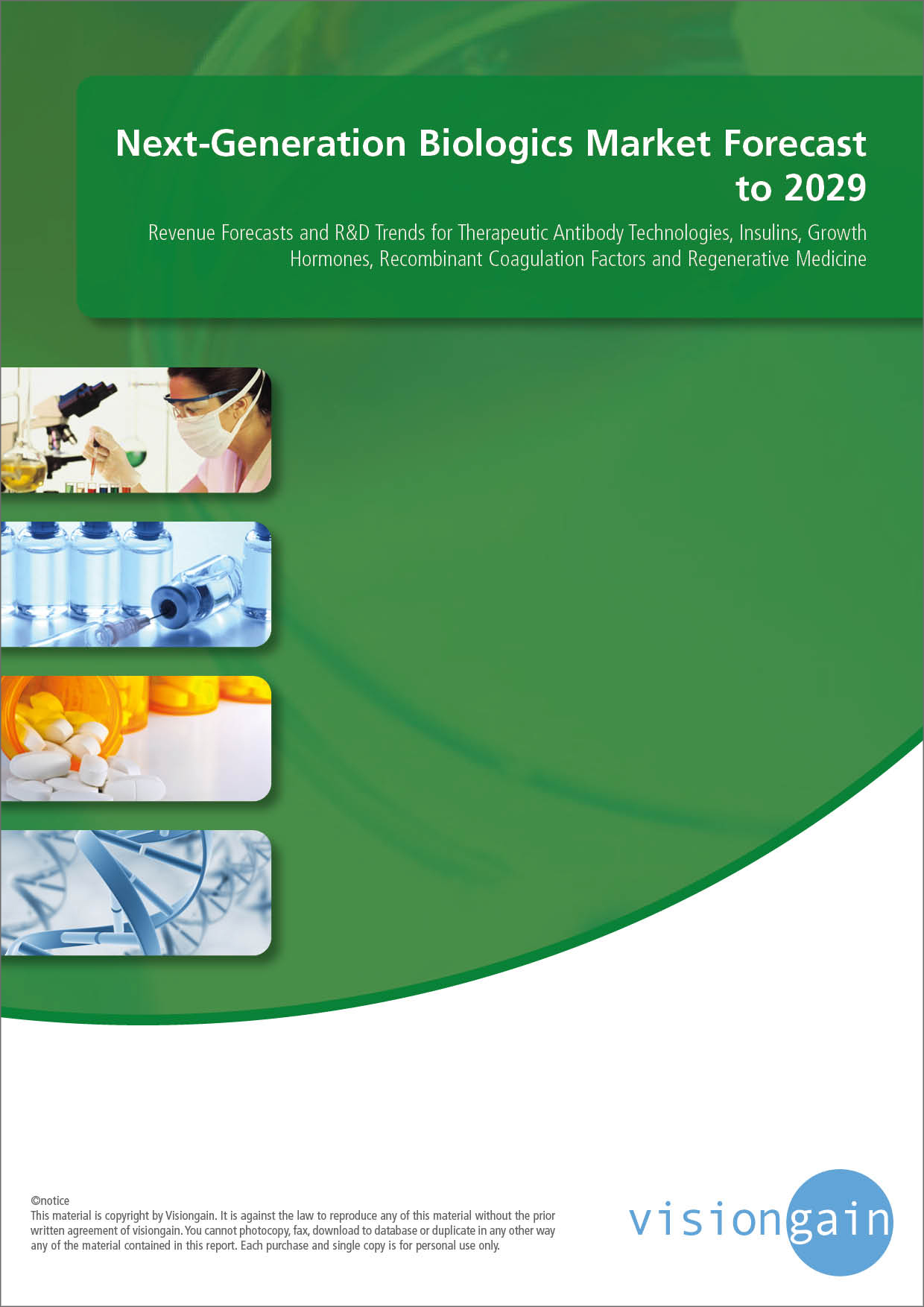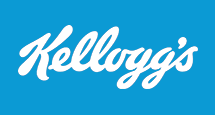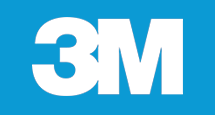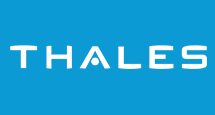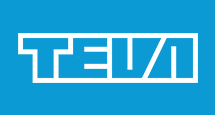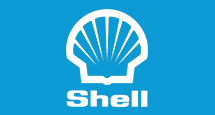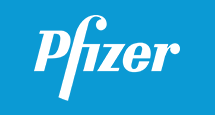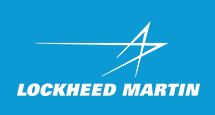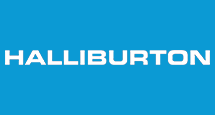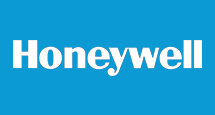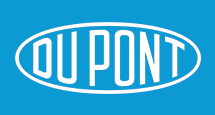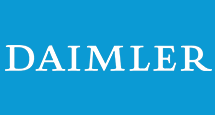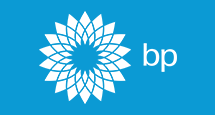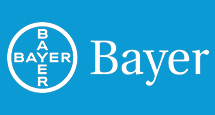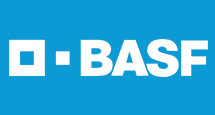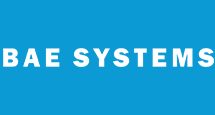Industries > Pharma > Next-Generation Biologics Market Forecast to 2029
Next-Generation Biologics Market Forecast to 2029
Revenue Forecasts and R&D Trends for Therapeutic Antibody Technologies, Insulins, Growth Hormones, Recombinant Coagulation Factors and Regenerative Medicine
The global next-generation biologics market is estimated to have reached $3.2bn in 2018. The market is expected to grow at a CAGR of 19.8% in the first half of the forecast period.
How this report will benefit you
Read on to discover how you can exploit the future business opportunities emerging in this sector.
In this brand new 296-page report you will receive 181 charts– all unavailable elsewhere.
The 296-page report provides clear detailed insight into the next-generation biologics market. Discover the key drivers and challenges affecting the market.
By ordering and reading our brand-new report today you stay better informed and ready to act.
Report Scope
• Next-Generation Biologics Market forecast to 2029
• Revenue forecasts for the Next-Generation Biologics Market by Sector to 2029:
• Regenerative Medicine: Stem Cell Therapies, Tissue Engineering, Gene Therapies
• Next-Generation Antibody Therapies: ADC, Engineered Antibodies, Bispecific Antibodies
• Next-Generation Antibody Fragments & ALPs
• Next-Generation Insulin: Oral Insulin, Ultra- Rapid Acting Insulin, Ultra-Long Acting Insulin
• Next-Generation Growth Hormones
• Next-Generation Coagulating Factors
• Others
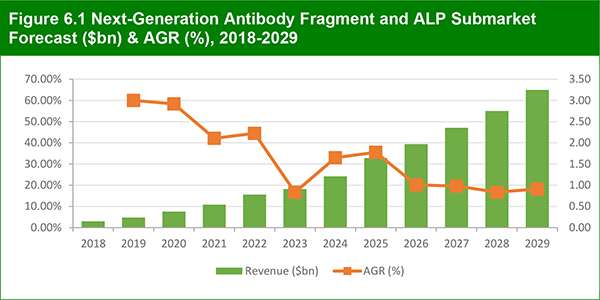
• Revenue forecasts for the Next-Generation Biologics Market Forecast by Region to 2029:
North America:
• U.S.
• Canada
Europe:
• Germany
• UK
• France
• Italy
• Spain
Asia-Pacific:
• Japan
• China
• India
RoW
• Brazil
• Mexico
• Russia
• South Africa
• Profiles of the selected leading companies:
• AbbVie
• Amgen
• Eli Lilly
• GSK
• Novo Nordisk
• Roche/ Genentech
• Sanofi Aventis
• Seattle Genetics
• The report also includes a STEP Analysis of the Next-Generation Biologics market.
• Key questions answered by this report:
• How is the next-generation biologics therapies market evolving?
• What is driving and restraining the next-generation biologics market?
• What are the market shares of segments of the overall next-generation biologics market in 2018?
• How will each next-generation biologics segment grow over the forecast period and how much revenue will these submarkets account for by 2029?
• How will the market shares for next-generation biologics therapies submarkets develop to 2029?
• Which therapies can succeed and what are their revenue potentials?
• What will be the main sales drivers for the overall market to 2029?
• How will political and regulatory factors influence the regional markets and other submarkets?
• How will the market shares of the regional markets change by 2029 and which geographical region will lead the market by 2029?
• How will the industry evolve during the period between 2019 and 2029?
Visiongain’s study is intended for anyone requiring commercial analyses for the next-generation biologics Market. You find data, trends and predictions.
Buy our report today Next-Generation Biologics Market Forecast to 2029: Revenue Forecasts and R&D Trends for Therapeutic Antibody Technologies, Insulins, Growth Hormones, Recombinant Coagulation Factors and Regenerative Medicine.
Visiongain is a trading partner with the US Federal Government
CCR Ref number: KD4R6
Do you have any custom requirements we can help you with? Any need for specific country, geo region, market segment or specific company information? Contact us today, we can discuss your needs and see how we can help: sara.peerun@visiongain.com
1.1 Overview of the Next-Generation Biologics Market
1.2 Why You Should Read This Report
1.3 How This Report Delivers
1.4 Main Questions Answered by This Analytical Study
1.5 Who is This Report For?
1.6 Methodology
1.7 Frequently Asked Questions (FAQ)
1.8 Associated Reports
1.9 About Visiongain
2. Introduction to Next-Generation Biologics
2.1 Brief History of Biological Drug Development
2.1.1 Limitations of Present-Generation Biological Drugs
2.2 The Promise of Next-Generation Biologics
2.2.1 Defining Next-Generation Biologics
2.2.1.1 A Definition of Regenerative Medicine
2.2.1.2 Extending Half-Life: Pegylation and Other Novel Strategies
3. World Next-Generation Biologics Market: Outlook and Forecast to 2029
3.1 The Next-Generation Biologics Market 2018
3.1.1 Development of the Next-Generation Biologics Market 2009-2016
3.1.2 Rising Demand for Biological Therapies
3.1.3 Next-Generation Drugs as a Share of the Biologics Market 2018
3.1.4 Main Sectors of the Next-Generation Biologics Market: Antibodies and Regenerative Medicine Lead the Way
3.1.5 Leading Companies in the Next-Generation Biologics Market 2018
3.2 The Next-Generation Biologics Market 2019-2029
3.2.1 Growth Drivers for Biological Drug Revenues 2019-2029
3.2.2 Global Next-Generation Biologics Market Forecast 2019-2029
3.2.3 Product Launches in All Sectors to Drive Market Growth 2019-2029
3.2.4 Next-Generation Biologics: Market Restraints 2019-2029
3.2.5 Rising Market Shares for Next-Generation Insulins 2019-2029
4. Regional Submarkets for Next-Generation Biologics Forecast to 2029
4.1 National Submarket Forecasts 2019-2029
4.1.1 How Will National Submarket Shares Change to 2029?
4.2 Rising Disease Incidence in Important Markets 2019-2029
4.3 Approval of Next-Generation Biologics in Leading National Submarkets
4.4 North America Next-Generation Biologics Market 2019-2029
4.4.1 US Will be the Largest Submarket for Next-Generation Biologics 2019-2029
4.4.2 Canada Next-Generation Biologics Market 2019-2029
4.5 European Next-Generation Biologics Market 2019-2029
4.5.1 Regenerative Medicine Development in the EU
4.5.2 Market Access for Next-Generation Biologics in the EU
4.5.3 Germany: Submarket Forecast 2019-2029
4.5.4 UK: Submarket Forecast 2019-2029
4.5.5 France: Submarket Forecast 2019-2029
4.5.6 Italy and Spain: Submarket Forecasts 2019-2029
4.6 Asia Pacific Next-Generation Biologics 2019-2029
4.6.1 Japan Next-Generation Biologics Market 2019-2029
4.6.1.1 National Expertise in Stem Cell Research
4.6.1.2 Japanese Submarket Forecast 2019-2029
4.6.2 Chinese Submarket Forecast 2019-2029
4.6.3 Indian Submarket Forecast 2019-2029
4.7 RoW Next-Generation Biologics Markets 2019-2029
4.7.1 Brazil Next-Generation Biologics Market 2019-2029
4.7.2 Mexico Next-Generation Biologics Market 2019-2029
4.7.3 Russia Next-Generation Biologics Market 2019-2029
4.7.4 South Africa Next-Generation Biologics Market 2019-2029
5. Next-Generation Antibodies: Submarket Outlooks to 2029
5.1 Strategies for Improving Antibody Therapies
5.1.1 Antibody-Drug Conjugates: Targeted Cytotoxic Therapies
5.1.2 Engineering Antibodies for Improved Potency
5.1.3 Bispecific Antibodies
5.2 Next-Generation Antibody Therapy Submarket
5.3 Next-Generation Antibody Therapy Submarket 2019-2029
5.3.1 Strong Revenue Growth for Next-Generation Antibodies 2019-2029
5.3.2 Blockbuster Potential Will Drive Growth to 2029: Kadcyla, Adcetris and Cosentyx
5.3.3 Next-Generation Antibodies: Submarket Restraints 2019-2029
5.4 Antibody-Drug Conjugates (ADC) Submarket 2019-2029
5.4.1 Antibody-Drug Conjugates Submarket Forecast 2019-2029
5.4.1.1 Kadcyla and Adcetris: Revenue Forecast 2019-2029
5.4.2 What Will Drive Growth for ACDs to 2029
5.4.3 A Long Pipeline of ADCs in Clinical Development
5.4.3.1 CMC544 (Pfizer): NHL Development Halted but Trials in ALL Continue
5.4.3.2 NKTR-102 (Nektar Therapeutics): Phase III for Metastatic Breast Cancer
5.4.3.3 IMGN853 (Immunogen): Phase III for Ovarian Cancer
5.4.3.4 SGN-CD33A (Seattle Genetics): Phase III for Acute myeloid leukemia
5.4.3.5 Rova-T (Abbvie): Phase III for SCLC
5.4.3.6 CDX-011: Potential for Accelerated Approval in Breast Cancer
5.5 Engineered Antibodies Submarket 2019-2029
5.5.1 Engineered Antibodies Submarket Forecast 2019-2029
5.5.1.1 Gazvya Will Lead the Submarket by 2029
5.5.2 Portfolio Management to Drive Growth 2019-2029
5.5.3 Engineered Antibodies Pipeline 2018
5.5.3.1 Benralizumab (MedImmune/Kyowa Hakko Kirin)
5.6 Bispecific Antibodies Submarket 2019-2029
5.6.1 Bispecific Antibodies Submarket Forecast 2019-2029
5.6.2 Bispecific Antibodies: Submarket Drivers and Restraints 2019-2029
5.6.3 One New Approval and Two Phase II Bispecific Antibodies in 2018
5.6.3.1 Blincyto (Amgen): The Second Approved Bispecific Antibody
6. Antibody Fragments and Novel Antibody-like Drugs: Commercial Potential to 2029
6.1 Next-Generation Antibody Fragments: Beyond Fab Fragments
6.1.1 Antibody-Like Proteins Mimic Antibody Therapies
6.1.2 There are Advantages to Using Fragments and Novel Scaffolds
6.2 Antibody Fragment and ALP Submarket 2019-2029
6.2.1 Antibody Fragment and ALP Submarket Forecast 2019-2029
6.2.2 Pharma is Investing Strongly in Antibody Fragments and ALPs
6.2.3 Limited Late-Stage R&D Pipeline to Restrain Growth to 2029
6.3 Outlook for Next-Generation Antibody Fragments 2019-2029
6.3.1 Next-Generation Antibody Fragment Submarket Forecast 2019-2029
6.3.2 One Platform Leads the Pipeline in 2018
6.3.2.1 Three Nanobodies in Development for Rheumatoid Arthritis
6.3.2.2 Caplacizumab (Ablynx): Targeting an Orphan Indication
6.4 The Antibody-Like Protein Submarket 2019-2029
6.4.1 Antibody-Like Protein Submarket Forecast 2019-2029
6.4.2 Four ALPs in Clinical Development in 2018
6.4.2.1 Abicipar Pegol (Allergan/Molecular Partners): Development of the Lead Clinical ALP Delayed
6.5 Will Next-Generation Immunotoxins Change the Market to 2029?
6.5.1 Challenges with First Generation Immunotoxins
6.5.2 Fusion Protein Conjugates: Pipeline 2018
6.5.2.1 Moxetumomab Pasudotox
6.5.3 Humanised Immunotoxins
6.5.3.1 Using Granzyme B in Immunotoxins
6.5.3.2 Immunornases: A Future Development Opportunity for Immunotoxins
7. Next-Generation Insulin Submarket: Outlook to 2029
7.1 Strategies for Next-Generation Insulin Development
7.1.1 Reformulating Insulin for Convenient Administration
7.1.1.1 Oral Insulin
7.1.1.2 Inhaled Insulin
7.1.1.3 Exubera: A Failed Attempt at Reformulated Insulin
7.2 Next-Generation Insulin Submarket 2019-2029
7.2.1 Tresiba: Approved in the EU and Japan
7.2.1.1 Tresiba: Revenue Forecast 2019-2029
7.3 Next-Generation Insulin Submarket 2018-2029
7.3.1 Next-Generation Insulin Submarket Forecast 2018-2029
7.3.2 Product Launches in the US and EU Will Drive Submarket Growth 2019-2029
7.3.3 Next-Generation Insulin Submarket Restraints 2019-2029
7.3.3.1 Biosimilar Insulins are Available Since 2015
7.4 Oral Insulin Submarket 2019-2029
7.4.1 Oral Insulin Submarket Forecast 2019-2029
7.4.2 Oral Insulin: Submarket Drivers and Restraints 2019-2029
7.4.3 A Limited Clinical-Stage Pipeline for Oral Insulin 2018
7.4.3.1 Oramed Pharmaceuticals: Oral Insulin in Phase II
7.4.3.2 Oshadi Icp: Phase II Currently Recruiting
7.4.3.3 IN-105: Biocon Partners with Bristol-Myers Squibb for Development
7.4.3.4 Diabetology: Multiple Deals Signed for Emerging Markets
7.4.3.5 Novo Nordisk: NN-1953
7.5 Ultra-Rapid Acting Insulin Submarket 2019-2029
7.5.1 Ultra-Rapid Acting Insulin Submarket Forecast 2019-2029
7.5.1.1 Will Inhaled Insulins Drive Revenue Growth to 2029?
7.5.2 Other Submarket Drivers and Restraints 2019-2029
7.5.3 Ultra-Rapid Acting Insulin Pipeline 2018
7.5.3.1 FlAsp (Novo Nordisk)
7.5.3.2 Adocia: Eli Lilly Opts to Discontinue Partnership
7.5.3.3 Halozyme Therapeutics
7.5.3.4 Biodel: Multiple Ultra Rapid Acting Candidates
7.5.3.5 Afrezza: Inhaled Insulin Nearing the Market
7.5.3.6 Adagio: A Second-Generation Inhaled Insulin
7.6 Ultra-Long Acting Insulin Submarket 2019-2029
7.6.1 Ultra-Long Acting Insulin Submarket Forecast 2019-2029
7.6.2 Revenue Growth Driven by Uptake of Tresiba
7.6.3 Ultra-Long Acting Insulin Pipeline 2018
7.6.3.1 Toujeo: Sanofi’s Next-Generation Insulin Analogue
7.6.3.2 LAPS-Insulin
8. Next-Generation Developments for Other Recombinant Proteins Forecast to 2029
8.1 Defining Next-Generation for Other Recombinant Protein Sectors
8.1.1 Next-Generation Interferon Beta: Plegridy Revenue Forecast 2019-2029
8.1.1.1 Plegridy May Compete With Other Long-Acting Interferon Beta Therapies 2019-2029
8.1.2 Next-Generation G-CSF: Teva Expands its Filgrastim Franchise
8.1.2.1 Other Clinical-Stages Advances in Filgrastim Therapy 2017
8.2 Next-Generation Recombinant Coagulation Factors 2019-2029
8.2.1 Next-Generation Recombinant Coagulation Factors Submarket Forecast 2019-2029
8.2.2 Submarket Drivers and Restraints 2019-2029
8.2.3 Clinical Pipeline for Recombinant Coagulation Factors 2019-2029
8.2.3.1 Fused Factors: Biogen Idec’s Eloctate and Alprolix
8.2.3.2 Baxter’s BAX 855
8.2.3.3 CSL Behring’s rlX-FP: Albumin-Bound Coagulation Factors
8.2.3.4 Bayer’s BAY94-9027
8.2.3.5 Novo Nordisk’s N8-GP for Haemophilia A
8.2.3.6 Novo Nordisk’s N9-GP for Haemophilia B
8.2.4 Gene Therapy as a New Treatment Option for Haemophilia
8.3 Next-Generation Growth Hormones 2019-2029
8.3.1 Next-Generation Growth Hormone Submarket Forecast 2019-2029
8.3.2 Brand Loyalty Will Restrain Uptake of Next-Generation Hormone 2019-2029
8.3.3 Long-Acting Growth Hormones
8.3.3.1 Biopartners/LG Life Sciences: The First Long-Acting Growth Hormone
8.3.3.2 Prolor Biotech/OPKO Health
8.3.3.3 Novo Nordisk: Looking to Extend its Market-Leading Position
8.3.3.4 Versartis: XTEN Technology for Half-Life Extension
8.3.4 Reformulated Growth Hormones: Offering Convenient Dosing for Paediatric Patients
8.3.4.1 Critical Pharmaceuticals: Nasal Delivery of Somatropin
9. Regenerative Medicine: Commercial Outlook to 2029
9.1 The Regenerative Medicine Submarket in 2018
9.1.1 Defining Regenerative Medicine
9.2 The Regenerative Medicine Submarket: Revenue Projections 2019-2029
9.2.1 Stem Cell and Gene Therapy Launches to Drive Growth 2019-2029
9.3 The Stem Cell Therapies Submarket 2019-2029
9.3.1 Prochymal (Mesoblast) for GvHD
9.3.1.1 The Future for Prochymal: Approval in Crohn’s Disease?
9.3.1.2 A Note on Stem Cell Transplants
9.3.2 Stem Cell Therapies Submarket Forecast 2019-2029
9.3.3 Stem Cell Therapies: Submarket Drivers and Restraints 2019-2029
9.3.3.1 Will iPSCs Prove Effective for Stem Cell Therapy?
9.3.4 Stem Cell Therapies Late-Stage Pipeline 2018
9.3.4.1 Cx601 (TiGenix)
9.3.4.2 Mesoblast: Mesenchymal Stem Cell Therapies
9.3.4.3 Baxter Pharmaceuticals: A Leading Cardiovascular Candidate
9.3.4.4 StemEx (Gamida Cell)
9.4 Outlook for Tissue Engineering 2019-2029
9.4.1 Two Sectors Lead the Market: Wound and Cartilage Repair
9.4.1.1 Apligraf Leads the Wound Repair Submarket
9.4.1.2 Organogenesis Markets Apligraf and Dermagraft from 2014
9.4.2 Tissue Engineering Submarket Forecast 2019-2029
9.4.3 Tissue Engineering: Submarket Drivers and Restraints 2019-2029
9.4.4 Future Developments in Cartilage Repair: Pipeline 2018
9.4.5 Organ Repair and Engineering: The Next Step in Tissue Engineering?
9.4.5.1 Engineered Skin
9.4.5.2 Engineered Veins
9.4.5.3 Organ Transplant: A Long-Term Tissue Engineering Opportunity
9.5 The Gene Therapies Submarket 2019-2029
9.5.1 Glybera Approved and Set for Launch in the EU
9.5.2 Gene Therapies Submarket: Revenue Projections 2019-2029
9.5.3 Glybera’s Approval Driving Submarket Growth Since 2014
9.5.4 There are More Than Five Gene Therapies in Late-Stage Development
9.5.4.1 ProstAtak: Gene Therapy for Prostate Cancer
9.5.4.2 TVEC (Amgen)
9.5.4.3 Generx (Cardium Therapeutics)
9.5.4.4 Spark Therapeutics: Established in 2013 for Ophthalmic Gene Therapy
10. Next-Generation Biologics: Industry Trends to 2029
10.1 Next-Generation Biologics: Market Strengths 2018
10.2 Next-Generation Biologics: Market Weakness 2018
10.3 The Next-Generation Biologics Market: STEP Analysis 2019-2029
10.3.1 Social Factors: Rising Disease Incidence and Demands for Convenience
10.3.1.1 Rising Incidence in Cardiovascular Disease, Cancer and Diabetes
10.3.1.2 Next-Generation Biologic Development in Emerging Markets
10.3.2 Technological Developments 2019-2029
10.3.3 Economic Pressures 2019-2029
10.3.3.1 High Drug Costs and Healthcare Spending
10.3.3.2 Limited Commercial Potential in Emerging Markets?
10.3.4 Political Issues: Regulatory Developments 2019-2029
10.4 Next-Generation Biologics: Development Trends 2019-2029
10.4.1 Improving Patient Convenience
10.4.2 Sustained Release Biologics: Pegylation and Beyond
10.4.3 Therapeutic Focus for Next-Generation Biologics
10.4.4 Next-Generation Biologics as Personalised Medicine
10.5 Manufacturing Challenges and Opportunities for Next-Generation Biologics
10.5.1 Contract Manufacturers Invest to Follow Development Trends
10.6 Commercialising Next-Generation Biologics
10.6.1 Product Lifecycle Management for First Generation Biologics
10.6.2 Proving Benefit in Next-Generation Products
10.6.3 Biosimilars as a Challenger 2019-2029
10.7 Partnering for Next-Generation Biologic Development
10.7.1 The Role of Big Pharma in the Next-Generation Biologics Market
10.7.2 Most Development Platforms Stem from Small Biotechs
11. Leading Manufacturers of Next-Generation Biologics
11.1 Eli Lilly and Company
11.1.1 Financial Overview
11.1.2 Key Developments
11.1.3 SWOT Analysis
11.2 F. Hoffmann-La Roche Ltd
11.2.1 Financials
11.2.2 Key Developments
11.2.3 SWOT Analysis
11.3 GlaxoSmithKline plc
11.3.1 Financial Overview
11.3.1 Key Developments
11.3.2 SWOT Analysis
11.4 Sanofi
11.4.1 Financial Overview
11.4.2 Key Developments
11.5 Abbvie
11.5.1 Financial Overview
11.5.2 Key Developments
11.5.3 SWOT Analysis
11.6 Amgen
11.6.1 Financial Overview
11.6.2 Recent Key Developments
11.6.3 SWOT Analysis
11.7 Novo Nordisk
11.7.1 Financial Overview
11.7.2 Key Developments
11.7.3 SWOT Analysis
11.8 Seattle Genetics
11.8.1 Financial Overview
11.8.2 SWOT Analysis
12. Conclusions from Our Research and Analysis
12.1 The Next-Generation Biologics Market Will Grow Strongly to 2029
12.2 Next-Generation Antibody Development Will Lead the Market
12.3 New Treatment Regimens Will Drive Demand for Next-Generation Biologics
12.4 Leading National Markets
12.5 Challenges Remain in Developing and Commercialising Next-Generation Biologics
Appendices
Associated Reports
Visiongain Report Sales Order Form
About Visiongain
Visiongain Report Evaluation Form
List of Tables
Table 2.1 First Approvals for Recombinant Protein Therapies, 1982-1997
Table 3.1 Top Ten Bestselling Prescription Pharmaceuticals: Revenues ($bn), 2017
Table 3.2 Next-Generation Biologics Market: Revenues ($bn) & Market Share (%) by Sector, 2018
Table 3.3 Biological Drugs Market: Drivers and Restraints, 2019-2029
Table 3.4 Next-Generation Biologics Market: Overall Market Forecast and Revenue Forecasts ($bn), AGR (%), & CAGR (%) by Sector, 2019-2029
Table 3.5 Next-Generation Biologics: Market Shares (%) by Sector, 2019, 2024 and 2029
Table 4.1 Next-Generation Biologics Market: Revenues ($bn) by National Submarket, 2018
Table 4.2 National Incidence and Prevalence of Leading Indications Treated with Biologics (millions of patients), 2016
Table 4.3 Main Approval Dates for Next-Generation Biologics in Leading National Submarkets, 2003-2013
Table 4.4 Next-Generation Biologics Submarkets in the North America Nations: Revenues ($bn) & Market Share (%) 2018
Table 4.5 North America Next-Generation Biologics Submarket Forecast ($bn), AGR (%), & CAGR (%), 2019-2029
Table 4.6 North America Regenerative Medicine Submarket Forecast ($bn), AGR (%), & CAGR (%), 2019-2029
Table 4.7 North America Next-Generation Antibody Therapies Submarket Forecast ($bn), AGR (%), & CAGR (%), 2019-2029
Table 4.8 North America Next-Generation Antibody Fragments & ALPs Submarket Forecast ($bn), AGR (%), & CAGR (%), 2019-2029
Table 4.9 North America Next-Generation Insulin Submarket Forecast ($bn), AGR (%), & CAGR (%), 2019-2029
Table 4.10 US Next-Generation Biologics Submarket Forecast ($bn), AGR (%), & CAGR (%), 2019-2029
Table 4.11 Next-Generation Biologics Approval
Table 4.12 Canada Next-Generation Biologics Submarket Forecast ($bn), AGR (%), & CAGR (%), 2019-2029
Table 4.13 Next-Generation Biologics Submarkets in the EU Nations: Revenues ($bn) & Market Share (%) 2018
Table 4.14 Europe Next-Generation Biologics Submarket Forecast ($bn), AGR (%), & CAGR (%), 2019-2029
Table 4.15 Europe Regenerative Medicine Submarket Forecast ($bn), AGR (%), & CAGR (%), 2019-2029
Table 4.16 Europe Next-Generation Antibody Therapies Submarket Forecast ($bn), AGR (%), & CAGR (%), 2019-2029
Table 4.17 Europe Next-Generation Antibody Fragments & ALPs Submarket Forecast ($bn), AGR (%), & CAGR (%), 2019-2029
Table 4.18 Europe Next-Generation Insulin Submarket Forecast ($bn), AGR (%), & CAGR (%), 2019-2029
Table 4.19 German Next-Generation Biologics Submarket Forecast ($bn), AGR (%), & CAGR (%), 2019-2029
Table 4.20 UK Next-Generation Biologics Submarket Forecast ($bn), AGR (%), & CAGR (%), 2019-2029
Table 4.21 France Next-Generation Biologics Submarket Forecast ($bn), AGR (%), & CAGR (%), 2019-2029
Table 4.22 Italian Next-Generation Biologics Submarket Forecast ($bn), AGR (%), & CAGR (%), 2019-2029
Table 4.23 Spanish Next-Generation Biologics Submarket Forecast ($bn), AGR (%), & CAGR (%) 2019-2029
Table 4.24 Next-Generation Biologics Submarkets in the Asia Pacific Nations: Revenues ($bn) & Market Share (%) 2018
Table 4.25 Asia Pacific Next-Generation Biologics Submarket Forecast ($bn), AGR (%), & CAGR (%), 2019-2029
Table 4.26 Asia Pacific Regenerative Medicine Submarket Forecast ($bn), AGR (%), & CAGR (%), 2019-2029
Table 4.27 Asia Pacific Next-Generation Antibody Therapies Submarket Forecast ($bn), AGR (%), & CAGR (%), 2019-2029
Table 4.28 Asia Pacific Next-Generation Antibody Fragments & ALPs Submarket Forecast ($bn), AGR (%), & CAGR (%), 2019-2029
Table 4.29 Asia Pacific Next-Generation Insulin Submarket Forecast ($bn), AGR (%), & CAGR (%), 2019-2029
Table 4.30 Biosimilars Approved and Marketed in Japan, 2018
Table 4.31 Japanese Next-Generation Biologics Submarket Forecast ($bn), AGR (%), & CAGR (%), 2019-2029
Table 4.32 Chinese Next-Generation Biologics Submarket Forecast ($bn), AGR (%), & CAGR (%), 2019-2029
Table 4.33 Indian Next-Generation Biologics Submarket Forecast ($bn), AGR (%), & CAGR (%), 2019-2029
Table 4.34 Next-Generation Biologics Submarkets in RoW Nations: Revenues ($bn) & Market Share (%) 2018
Table 4.35 RoW Next-Generation Biologics Submarket Forecast ($bn), AGR (%), & CAGR (%), 2019-2029
Table 4.36 RoW Regenerative Medicine Submarket Forecast ($bn), AGR (%), & CAGR (%), 2019-2029
Table 4.37 RoW Next-Generation Antibody Therapies Submarket Forecast ($bn), AGR (%), & CAGR (%), 2019-2029
Table 4.38 RoW Next-Generation Antibody Fragments & ALPs Submarket Forecast ($bn), AGR (%), & CAGR (%), 2019-2029
Table 4.39 RoW Next-Generation Insulin Submarket Forecast ($bn), AGR (%), & CAGR (%), 2019-2029
Table 4.40 Brazil Next-Generation Biologics Submarket Forecast ($bn), AGR (%), & CAGR (%), 2019-2029
Table 4.41 Mexico Next-Generation Biologics Submarket Forecast ($bn), AGR (%), & CAGR (%), 2019-2029
Table 4.42 Russia Next-Generation Biologics Submarket Forecast ($bn), AGR (%), & CAGR (%), 2019-2029
Table 4.43 South Africa Next-Generation Biologics Submarket Forecast ($bn), AGR (%), & CAGR (%), 2019-2029
Table 5.1 Monoclonal Antibodies Submarket: Leading Drug Revenues ($bn), 2017
Table 5.2 Next-Generation Antibodies Submarket: Approved Drug Revenues ($bn), 2018
Table 5.3 Selected Clinical and Pre-Clinical ADC Platforms, 2018
Table 5.4 Selected Clinical and Pre-Clinical Engineered Antibody Platforms, 2018
Table 5.5 Next-Generation Antibodies Submarket: Revenues by Sector ($bn) & Market Share (%), 2018
Table 5.6 Next-Generation Antibodies Submarket: Overall Submarket Forecast and Revenue Forecasts ($bn), AGR (%), & CAGR (%), by Sector, 2018-2029
Table 5.7 Next-Generation Antibodies Submarket: Drivers and Restraints, 2019-2029
Table 5.8 Antibody Drug Conjugates Submarket: Revenues ($bn) and Submarket Shares (%) by Drug, 2018
Table 5.9 Antibody-Drug Conjugates Submarket Forecast ($bn), AGR (%), & CAGR (%), 2019-2029
Table 5.10 Kadcyla and Adcetris: Revenue Forecasts ($bn), 2018-2029
Table 5.11 Antibody-Drug Conjugates Submarket: Drivers and Restraints, 2019-2029
Table 5.12 Selected Antibody-Drug Conjugates in Phase III Development, 2018
Table 5.13 Selected Antibody-Drug Conjugates in Phase II Development, 2018
Table 5.14 Selected Antibody-Drug Conjugates in Phase I Development, 2018
Table 5.15 Engineered Antibodies Submarket Forecast ($bn), 2019-2029
Table 5.16 Gazyva/Gazyvaro: Revenue Forecast ($bn), 2018-2029
Table 5.17 Engineered Antibodies Submarket: Drivers and Restraints, 2019-2029
Table 5.18 Selected Engineered Antibodies in Phase II and III Development, 2018
Table 5.19 Bispecific Antibodies Submarket Forecast ($bn), 2019-2029
Table 5.20 Bispecific Antibodies Submarket: Drivers and Restraints, 2019-2029
Table 5.21 Bispecific Antibodies in Phase I and II Development, 2018
Table 6.1 Selected Next-Generation Antibody Fragment Platforms, 2018
Table 6.2 Selected Antibody-Like Protein Platforms, 2018
Table 6.3 Next-Generation Antibody Fragment and ALP Submarket: Overall Submarket Forecast and Revenue Forecasts ($bn), AGR (%) & CAGR (%), by Sector, 2019-2029
Table 6.4 Next-Generation Antibody Fragment and ALP Submarket: Drivers and Restraints, 2019-2029
Table 6.5 Next-Generation Antibody Fragment Submarket Forecast ($bn), AGR (%) & CAGR (%), 2018-2029
Table 6.6 Next-Generation Antibody Fragment Submarket: Clinical Pipeline, 2018
Table 6.7 Next-Generation Antibody-Like Protein Submarket Forecast ($bn), 2018-2029
Table 6.8 Next-Generation Antibody-Like Protein Submarket: Clinical Pipeline, 2018
Table 7.1 Tresiba: Revenue Forecast ($bn), AGR (%) & CAGR (%), 2018-2029
Table 7.2 Next-Generation Insulin Submarket: Overall Submarket Forecast and Revenue Forecasts ($bn) by Sector, 2019-2029
Table 7.3 Next-Generation Insulin Submarket: Drivers and Restraints, 2019-2029
Table 7.4 Diabetes: Prevalence and Proportion of Population Affected, 2016
Table 7.5 Leading Insulin Analogues: US and EU Patent Expiries, 2013-2019
Table 7.5 Oral Insulin Submarket Forecast ($bn), & CAGR (%) 2019-2029
Table 7.6 Oral Insulin Submarket: Drivers and Restraints, 2019-2029
Table 7.7 Oral Insulin: Selected Pre-Clinical and Clinical-Stage Pipeline, 2018
Table 7.8 Ultra-Rapid Acting Insulin Submarket Forecast ($bn), 2019-2029
Table 7.9 Ultra-Rapid Acting Insulin Submarket: Drivers and Restraints, 2019-2029
Table 7.10 Ultra-Rapid Acting Insulin: Pre-Clinical and Clinical-Stage Pipeline, 2018
Table 7.11 Afrezza: Revenue Forecast ($bn), AGR (%) & CAGR (%), 2018-2029
Table 7.12 Ultra-Long Acting Insulin Forecast ($bn) AGR (%) & CAGR (%), 2019-2029
Table 7.13 Ultra-Long Acting Insulin Submarket: Drivers and Restraints, 2019-2029
Table 7.14 Selected Ultra-Long Acting Insulin: Clinical-Stage Pipeline, 2018
Table 8.1 Plegridy: Revenue Forecast ($bn), AGR (%) & CAGR (%), 2018-2029
Table 8.2 Recombinant Coagulation Factor Half-Lives and Target Populations, 2018
Table 8.3 Next-Generation Recombinant Coagulation Factors Submarket Forecast ($bn), AGR (%) & CAGR (%), 2018-2029
Table 8.4 Next-Generation Recombinant Coagulation Factors Submarket: Drivers and Restraints, 2019-2029
Table 8.5 Long-Acting Recombinant Factors VIII and IX in Late-Stage Clinical Development, 2018
Table 8.6 Eloctate: Revenue Forecast ($bn), AGR (%) & CAGR (%), 2018-2029
Table 8.7 Alprolix: Revenue Forecast ($bn), 2019-2029
Table 8.8 Next-Generation Growth Hormones Submarket Forecast ($bn), 2019-2029
Table 8.9 Next-Generation Growth Hormones Submarket: Drivers and Restraints, 2019-2029
Table 8.10 Selected Next-Generation Growth Hormones in Clinical Development, 2018
Table 9.1 Regenerative Medicine Submarket: Revenues by Sector ($bn) & Submarket Share (%) 2018
Table 9.2 Regenerative Medicine Submarket: Overall Submarket Forecast and Revenue Forecasts ($bn), AGR (%) and CAGR (%) by Sector, 2018-2029
Table 9.3 Regenerative Medicine Submarket: Drivers and Restraints, 2019-2029
Table 9.4 Stem Cell Therapies Submarket Forecast ($bn), AGR (%) & CAGR (%), 2018-2029
Table 9.5 Stem Cell Therapies Submarket: Drivers and Restraints, 2019-2029
Table 9.6 Selected Stem Cell Therapies in Phase II and III Clinical Trials, 2018
Table 9.7 Selected Stem Cell Therapies in Phase I/II Development, 2018
Table 9.8 Tissue Engineering Submarket Forecast ($bn), AGR (%) & CAGR (%), 2018-2029
Table 9.9 Tissue Engineering Submarket: Drivers and Restraints, 2019-2029
Table 9.10 Gene Therapies Submarket Forecast ($bn), AGR (%) & CAGR (%), 2018-2029
Table 9.11 Gene Therapies Submarket: Drivers and Restraints, 2019-2029
Table 9.12 Gene Therapies in Phase II and III Clinical Trials, 2018
Table 10.1 Next-Generation Biologics: STEP Analysis, 2019-2029
Table 10.2 Selected CMO Investments in Next-Generation Biologics, to 2018
Table 12.1 Next-Generation Biologics Market: Submarket Forecasts ($bn) and Market Shares (%), 2018, 2024 and 2029
Table 12.2 Next-Generation Biologics Market: Revenues ($bn) by National Submarket, 2018
List of Figures
Figure 1.1 Next-Generation Biologic Market Segmentation, 2017
Figure 3.1 Next-Generation Biologics: Market Shares (%) by Sector, 2018
Figure 3.2 Next-Generation Biologics Market: Revenue Forecast ($bn), 2019-2029
Figure 3.3 Next-Generation Biologics: Market Drivers, 2018-2028
Figure 3.4 Next-Generation Biologics: Market Restraints, 2018-2029
Figure 3.5 Next-Generation Biologics: Market Shares (%) by Sector, 2018-2029
Figure 4.1 Next-Generation Biologics: Market Shares (%) by Country, 2019
Figure 4.2 Next-Generation Biologics: Market Revenue ($bn) by Country, 2018-2029
Figure 4.3 Next-Generation Biologics: Market Shares (%) by Country, 2018-2029
Figure 4.4 North America Region: Next-Generation Biologics Submarket Shares (%), 2018-2029
Figure 4.5 US Next-Generation Biologics Submarket Forecast ($bn) & AGR (%), 2018-2029
Figure 4.6 Canada Next-Generation Biologics Submarket Forecast ($bn) & AGR (%), 2018-2029
Figure 4.7 EU Region: Next-Generation Biologics Submarket Shares (%), 2018-2029
Figure 4.8 German Next-Generation Biologics Submarket Forecast ($bn) & AGR (%), 2018-2029
Figure 4.9 UK Next-Generation Biologics Submarket Forecast ($bn) & AGR (%), 2018-2029
Figure 4.10 French Next-Generation Biologics Submarket Forecast ($bn) & AGR (%), 2018-2029
Figure 4.11 Italian Next-Generation Biologics Submarket Forecast ($bn), 2019-2029
Figure 4.12 Spanish Next-Generation Biologics Submarket Forecast ($bn) & AGR (%), 2018-2029
Figure 4.13 Asia Pacific Region: Next-Generation Biologics Submarket Shares (%), 2018-2029
Figure 4.14 Japanese Next-Generation Biologics Submarket Forecast ($bn) & AGR (%), 2018-2029
Figure 4.15 Chinese Next-Generation Biologics Submarket Forecast ($bn) &AGR (%), 2019-2029
Figure 4.16 Indian Next-Generation Biologics Submarket Forecast ($bn) & AGR (%), 2018-2029
Figure 4.17 RoW Region: Next-Generation Biologics Submarket Shares (%), 2018-2029
Figure 4.18 Brazil Next-Generation Biologics Submarket Forecast ($bn) & AGR (%), 2018-2029
Figure 4.19 Mexico Next-Generation Biologics Submarket Forecast ($bn) & AGR (%), 2018-2029
Figure 4.20 Russia Next-Generation Biologics Submarket Forecast ($bn) & AGR (%), 2018-2029
Figure 4.21 South Africa Next-Generation Biologics Submarket Forecast ($bn) & AGR (%), 2018-2029
Figure 5.1 Next-Generation Antibodies: Submarket Shares (%) by Sector, 2018-2029
Figure 5.2 Next-Generation Antibodies Submarket Forecast ($bn), 2018-2029
Figure 5.3 Antibody-Drug Conjugates: Submarket Shares (%) by Drug, 2018
Figure 5.4 Kadcyla Revenue Forecasts ($bn) & AGR (%), 2019-2029
Figure 5.5 Adcetris: Revenue Forecasts ($bn) & AGR (%), 2019-2029
Figure 6.1 Next-Generation Antibody Fragment and ALP Submarket Forecast ($bn) & AGR (%), 2018-2029
Figure 6.2 Next-Generation Antibody Fragment Submarket Forecast ($bn), 2018-2029
Figure 6.3 Next-Generation Antibody-Like Protein Submarket Forecast ($bn), 2018-2029
Figure 7.1 Tresiba: Revenue Forecast ($bn), & AGR (%), 2019-2029
Figure 7.2 Next-Generation Insulin Submarket Revenue Forecast ($bn), 2019-2029
Figure 7.3 Diabetes: Proportion of Population Affected, 2016
Figure 7.4 Oral Insulin Submarket Forecast ($bn), 2019-2029
Figure 7.5 Ultra-Rapid Acting Insulin Submarket Forecast ($bn), 2019-2029
Figure 7.6 Afrezza: Revenue Forecast ($bn), 2019-2029
Figure 7.7 Ultra-Long Acting Insulin Submarket Forecast ($bn) & AGR (%), 2018-2029
Figure 8.1 Plegridy: Revenue Forecast ($bn) & AGR (%), 2018-2029
Figure 8.2 Next-Generation Recombinant Coagulation Factors Submarket Forecast ($bn) & AGR (%), 2018-2029
Figure 8.3 Eloctate: Revenue Forecast ($bn), 2019-2029
Figure 8.4 Alprolix: Revenue Forecast ($bn), 2019-2029
Figure 8.5 Next-Generation Growth Hormones Submarket Forecast ($bn), 2019-2029
Figure 9.1 Regenerative Medicine: Submarket Shares (%) by Sector, 2018-2029
Figure 9.2 Regenerative Medicine Submarket Forecast ($bn) & AGR (%), 2018-2029
Figure 9.3 Stem Cell Therapies Submarket Forecast ($bn) & AGR (%), 2018-2029
Figure 9.4 Tissue Engineering Submarket Forecast ($bn) & AGR (%), 2018-2029
Figure 9.5 Gene Therapies Submarket Forecast ($bn) & AGR (%), 2018-2029
Figure 10.1 Big Pharma Partnering Opportunities for Next-Generation Biologics Development, 2018
Figure 11.1 Eli Lilly and Company Revenue ($mn), 2014-2017
Figure 11.2 Roche Revenue ($bn) & AGR (%) 2016-2018
Figure 11.3 GSK Revenue ($mn), 2014-2017
Figure 11.4 Sanofi Revenue ($bn) & AGR (%) 2014-2017
Figure 11.5 AbbVie Revenue ($bn) & AGR (%) 2014-2017
Figure 11.6 Amgen Revenue ($bn) & AGR (%) 2015-2018
Figure 11.7 Novo Nordisk Revenue ($mn) & AGR (%) 2015-2018
Figure 11.8 Revenue ($bn) & AGR (%) 2014-2018
Figure 12.1 Next-Generation Biologics Market: Revenue Forecast ($bn), 2018, 2024, & 2029
Aastrom Biosciences (now Vericel Corporation)
AbbVie
Abcam
Ablynx
ADC Therapeutics
Adnexus (part of Bristol-Myers Squibb)
Adocia
Advanced Cell Technology (now Ocata Therapeutics)
Advantagene
Affibody
Agensys (now part of Astellas Pharma)
Alcon (part of Novartis)
Alexion Pharmaceuticals
Alfacell (now Tamir Biotechnology)
Alkermes
Allergan
Allozyne
Ambrx
Amgen
AMRI
AnGes
Applied Genetic Technologies (AGTC)
Ark Therapeutics
Astellas Pharma
AstraZeneca
Athersys
Avita Medical
Baxter International
Bayer Healthcare
Belrose Pharma
Benda Pharmaceutical
Biocad
BioCancell Therapeutics
Biocon
Biodel
Biogen Idec
Bioheart
BioMarin Pharmaceutical
Biopartners (part of Bioton)
Biotest Pharmaceuticals
Bioton
BioVex Group (part of Amgen)
BioWa (part of Kyowa Hakko Kirin)
bluebird bio
Boehringer Ingelheim
BrainStorm Cell Therapeutics
Bristol-Myers Squibb
Capricor Therapeutics
Cardio3 BioSciences
Cardium Therapeutics
Catalent Pharma Solutions
Celgene
Celladon
CellCoTec
Celldex Therapeutics
Cellerant Therapeutics
Cellular Dynamics International (CDI)
Cephalon (part of Teva)
CEPiA (part of Sanofi)
Ceregene
Chatham Therapeutics
Chiesi Farmaceutici
Chugai (part of Roche)
Civitas Therapeutics
Clayton Biotechnologies
Cold Genesys
Concortis
Covagen
Crescendo Biologics
Critical Pharmaceuticals
CSL Behring
CytoMedix
Cytori Therapeutics
Dance Biopharm
Delenex Therapeutics
Depuy Mitek (part of J&J)
Diabetology
Diasome Pharmaceuticals
Dr. Reddy’s Laboratories
Dyax
Eddingpharm
EGEN
Eisai
Elan Pharmaceuticals (now part of Perrigo Company)
Eli Lilly
Emisphere
Enzon Pharmaceuticals
EnzymeRx
Epitomics (part of Abcam)
ESBATech (part of Novartis)
Flamel Technologies
Fresenius Biotech (now named Neovii Biotech, part of Neopharm)
Fuji Pharma
Fujifilm Diosynth Biotechnologies
Gamida Cell
Genentech (part of Roche)
Generex Biotechnology
Genmab
Genzyme (part of Sanofi)
Geron
GlaxoSmithKline (GSK)
GlycoExpress
Glycotope
Halozyme Therapeutics
Hanmi Pharmaceutical
Health Canada
Hikma Pharmaceuticals
Histogenics
Humacyte
Human Stem Cells Institute (HSCI)
Igenica
ImmunoGen
Immunomedics
Innovent Biologics
Integra LifeSciences
Introgen Therapeutics
Jain Foundation
JCR Pharmaceuticals
Johnson & Johnson (J&J)
Juventas Therapeutics
Karolinska Institute
Kyowa Hakko Kirin
LG Life Sciences
LifeCell
Lonza
Loyola University
MacroGenics
MannKind
MedImmune (part of AstraZeneca)
Merck & Co.
Merck KGaA
Merck Serono
Merrimack Pharmaceuticals
Merrion Pharmaceuticals
Mersana Therapeutics
Mesoblast
Micromet (part of Amgen)
Millennium Pharmaceuticals
Mitsubishi Tanabe Pharma
Mochida Pharmaceutical
Molecular Partners
MorphoSys
Nektar Therapeutics
Neopharm Group
NeoStem
NeuralStem
Nippon Kayaku
Novartis
Novo Nordisk
Nuron Biotech
NuVasive
Ocata Therapeutics (formerly Advanced Cell Technology)
OncoSec Medical
OPKO Health
Oramed Pharmaceuticals
Organogenesis
Organovo
Orthofix
Osiris Therapeutics
PeriphaGen Holdings
Perrigo Company
Pfizer
Pieris
Piramal Group
Progenics Pharmaceuticals
Prolor Biotech (part of OPKO Health)
Rani Therapeutics
ratiopharm (part of Teva)
Redwood Bioscience
Regeneron Pharmaceuticals
Reliance Life Sciences
ReNeuron
RIKEN [Japan]
Roche
Roche Glycart (part of Roche)
SAFC
Sandoz (part of Novartis)
Sanofi
Seattle Genetics
Shanghai Sunway Biotech
Shenzhen SiBiono GeneTech (part of Benda)
Shreya Life Sciences
SironRX Therapeutics
Skye Orthobiologics
Sorrento Therapeutics
Sotex PharmFirm
Spark Therapeutics
Spectrum Pharmaceuticals
Spirogen (part of AstraZeneca)
Stelis Biopharmaceuticals (part of Strides Arcolab)
Stem CentRx
StemCells
Stempeutics Research
Strativa Pharmaceuticals
Strides Arcolab
Sutro Biopharma
Swedish Orphan Biovitrum (Sobi)
Symphogen
Synthon
Synthon Biopharmaceuticals BV (part of Synthon)
Takeda Pharmaceutical Company
Teva Pharmaceutical Industries
Thermalin Diabetes
TiGenix
TRION Pharma
UCB
UniQure
USV
VBL Therapeutics
Vericel Corporation
Versartis
viDA Therapeutics
Viventia Biotechnologies Inc
VX Pharma
Wyeth (part of Pfizer)
Xencor
Xeris Pharmaceuticals
Zydus Cadila
List of Organizations Mentioned in the Report
Agence Nationale de Sécurité du Médicament et des Produits de Santé (ANSM)
Babraham Institute
Centers for Disease Prevention and Control (CDC) [US]
Children’s Hospital of Philadelphia (CHOP)
China Food and Drug Administration (CFDA)
Duke University
Duke University Hospital
EMA’s Committee for Medicinal Products for Human Use (CHMP)
European Commission
European Medicines Agency (EMA)
Food and Drug Administration (FDA) [US]
Institut für Qualität und Wirtschaftlichkeit im Gesundheitswesen (IQWiG) [Germany]
International Diabetes Federation (IDF)
Ministry of Health, Labor and Welfare (MHLW) [Japan]
Moorfields Eye Hospital [UK]
National Cancer Institute (NCI) [US]
National Health Service (NHS) [UK]
National Institute for Health and Care Excellence (NICE) [UK]
National Institute of Diabetes and Digestive and Kidney Diseases (NIDDK) [US]
Royal Institute of Technology [Sweden]
Russian Ministry of Healthcare (Minzdrav)
Scottish Medicines Consortium (SMC)
Stanford University
Swiss Federal Institute of Technology
Tianjin International Joint Academy of Bio-medicine
University of California, San Francisco (UCSF)
University of Chicago
University of Toronto
World Bank Group
World Cancer Research Fund (WCRF)
World Health Organization (WHO)
Yale School of Medicine
Download sample pages
Complete the form below to download your free sample pages for Next-Generation Biologics Market Forecast to 2029
Related reports
-

Pharmaceutical Contract Manufacturing Market 2019-2029
The pharmaceutical contract manufacturing market is expected to grow at a CAGR of 5.7% in the first half of the...Full DetailsPublished: 19 August 2019 -
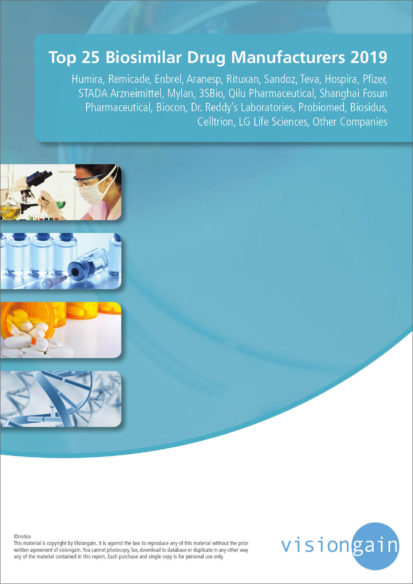
Top 25 Biosimilar Drug Manufacturers 2019
Visiongain forecasts that the biosimilar drugs market will grow with a CAGR of 40% from 2018 to 2028.
...Full DetailsPublished: 17 April 2019 -
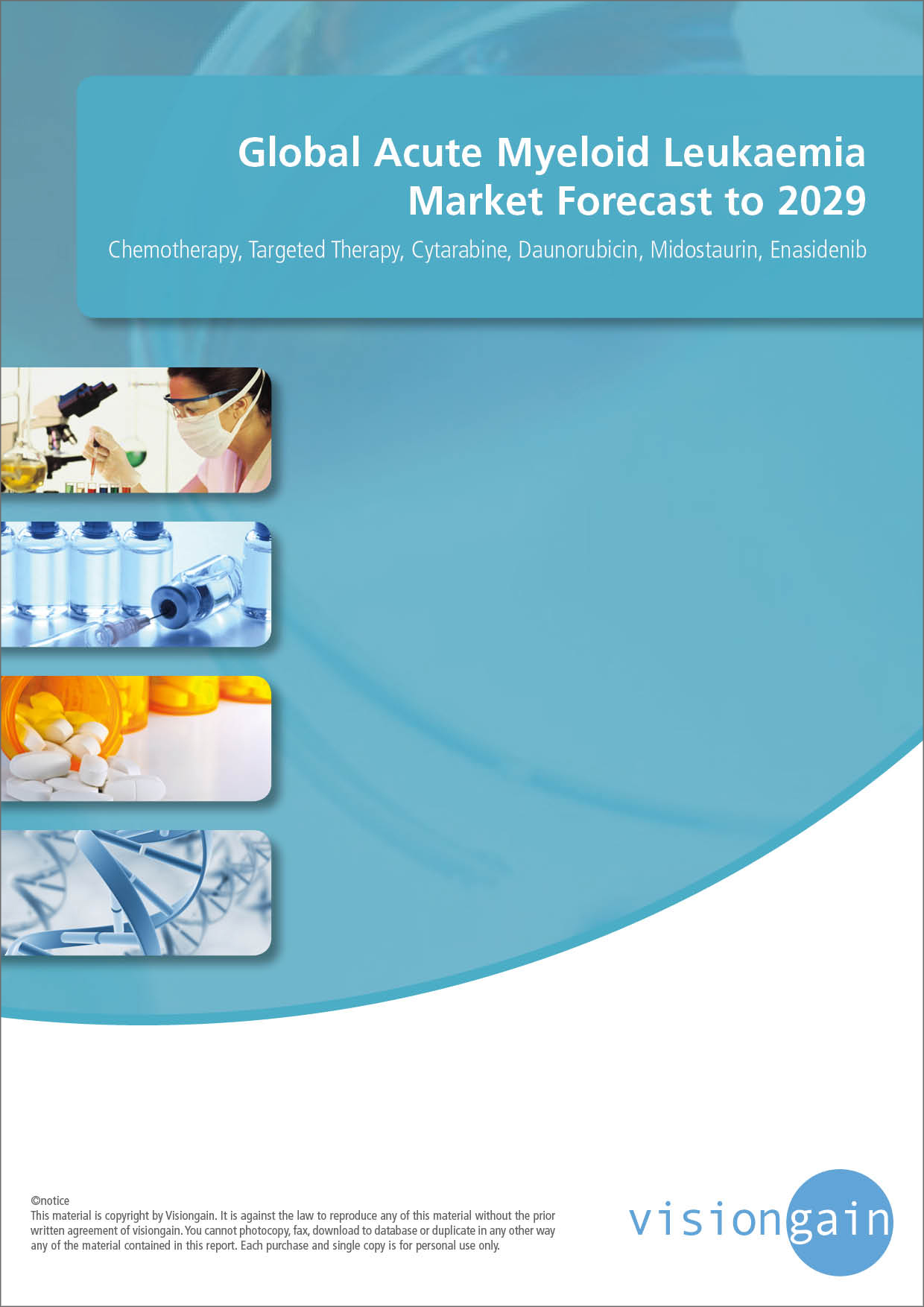
Global Acute Myeloid Leukaemia Market Forecast to 2029
The global acute myeloid leukaemia market is estimated to grow at a CAGR of 13% in the first half of...
Full DetailsPublished: 31 October 2019 -
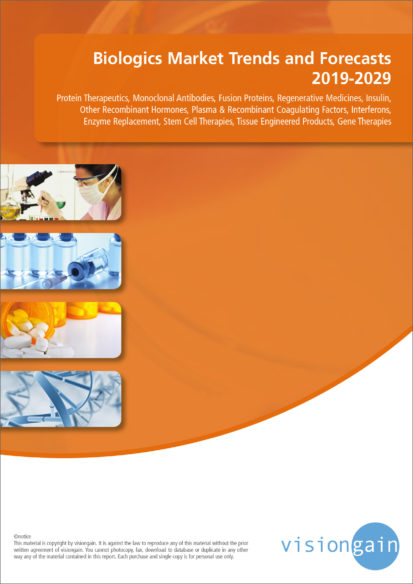
Biologics Market Trends and Forecasts 2019-2029
The global biologics market is estimated to reach $266bn in 2024. The market is expected to grow at a CAGR...
Full DetailsPublished: 28 August 2019 -
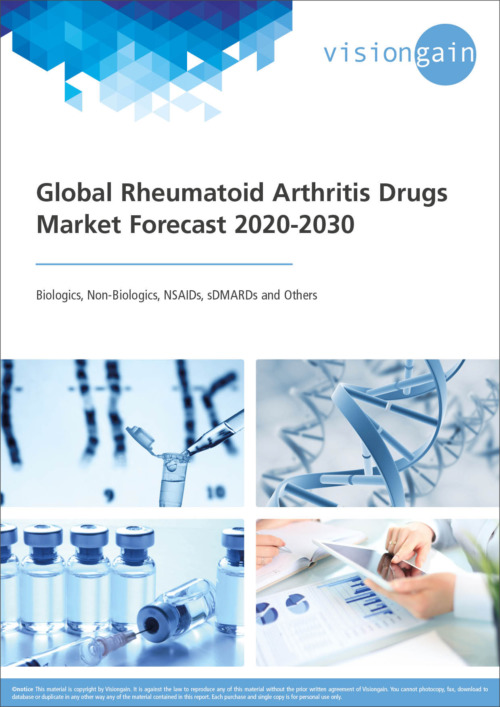
Global Rheumatoid Arthritis Drugs Market Forecast 2020-2030
The global Rheumatoid Arthritis market is estimated to have reached $58bn in 2018 and is expected to grow at a...
Full DetailsPublished: 17 February 2020 -
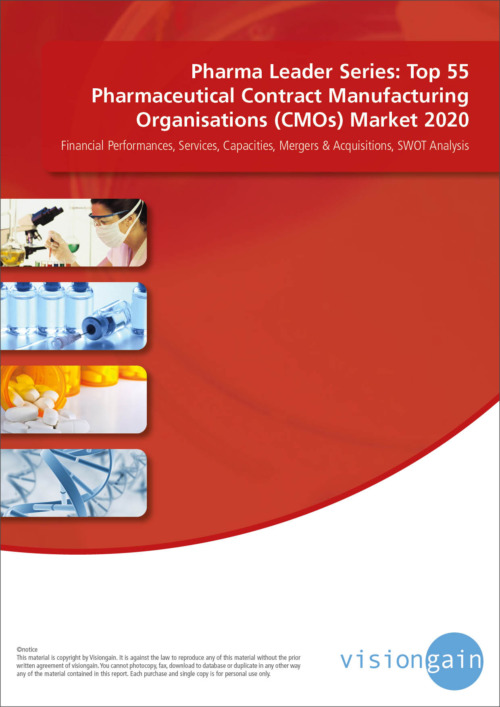
Pharma Leader Series: Top 55 Pharmaceutical Contract Manufacturing Organisations (CMOs) Market 2020
Contract manufacturing represents the largest sector of the pharma outsourcing industry. Pharmaceutical companies have sought to take advantage of the...
Full DetailsPublished: 16 January 2020 -
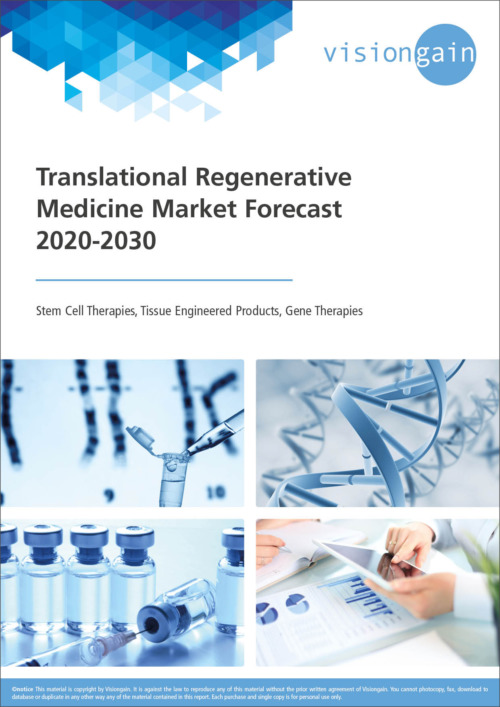
Translational Regenerative Medicine Market Forecast 2020-2030
The Global Translational Regenerative Medicine market is estimated to grow at a CAGR of 24% in the first half of...
Full DetailsPublished: 31 January 2020 -
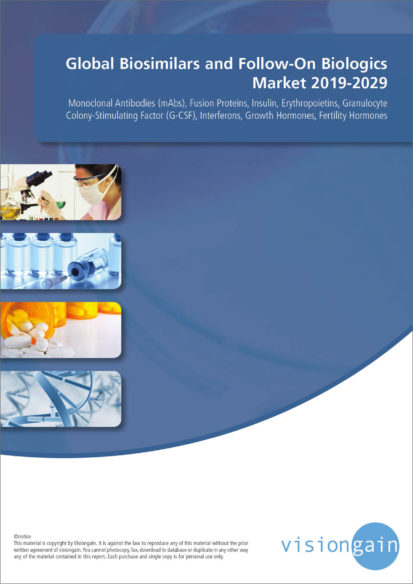
Global Biosimilars and Follow-On Biologics Market 2019-2029
The global biosimilars and follow-on biologics market is estimated to have reached $10.7bn in 2018 and expected to grow at...
Full DetailsPublished: 21 March 2019 -
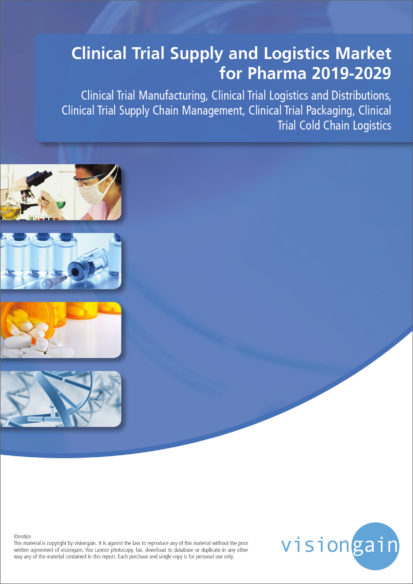
Clinical Trial Supply and Logistics Market for Pharma 2019-2029
The global clinical trial supply and logistics market for pharma is estimated to have reach $17.1bn in 2018, dominated by...
Full DetailsPublished: 18 April 2019 -
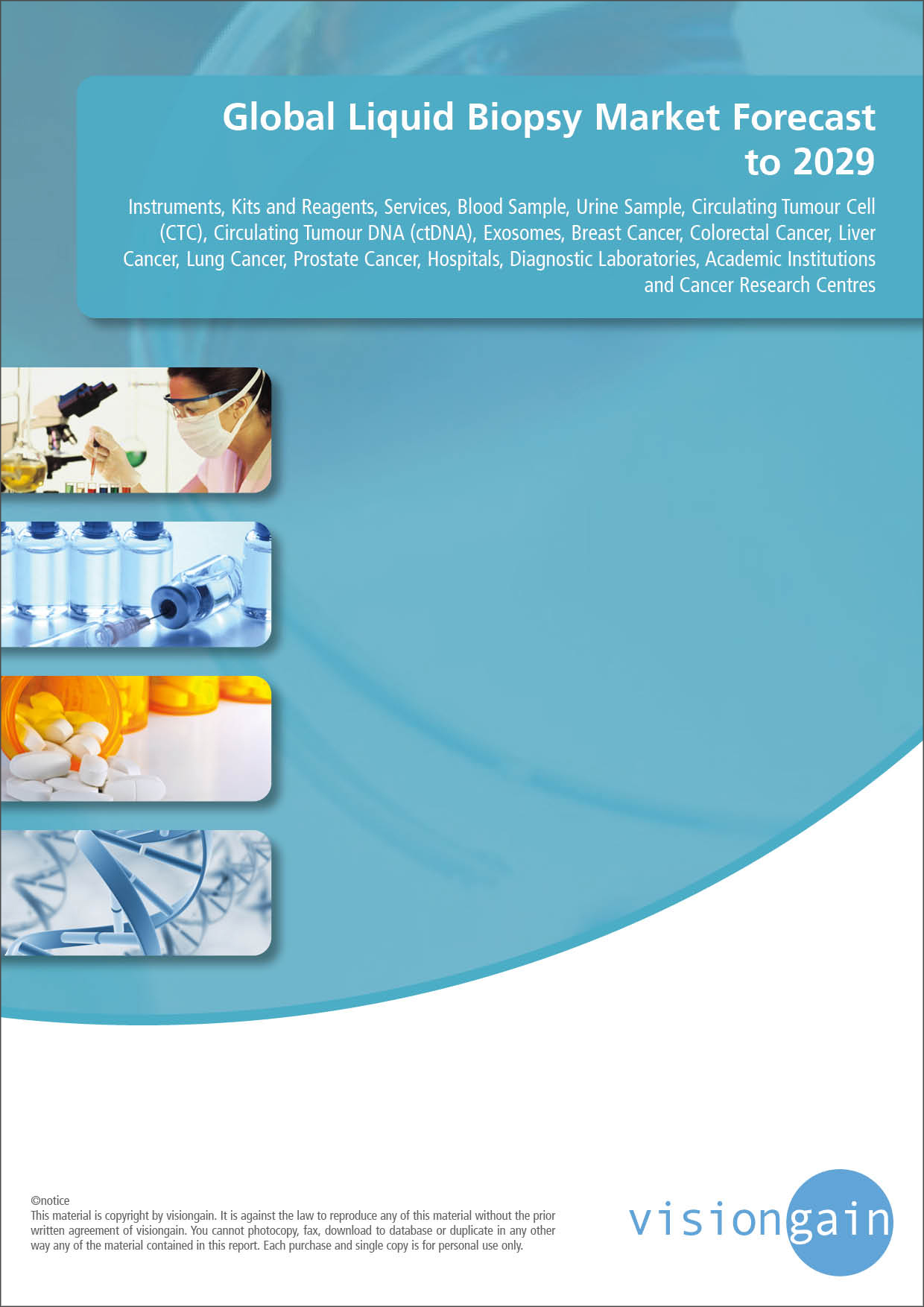
Global Liquid Biopsy Market Forecast to 2029
The global liquid biopsy market is estimated to reach $1,173.5m in 2019. The kits & reagents submarket holds the biggest...
Full DetailsPublished: 29 November 2019
Download sample pages
Complete the form below to download your free sample pages for Next-Generation Biologics Market Forecast to 2029
Do you have any custom requirements we can help you with?
Any specific country, geo region, market segment or specific company information?
Email us today, we can discuss your needs and see how we can help: jamie.roberts@visiongain.com
Would you like a free report overview of the report of your choice?
If so, please drop an email to Jamie Roberts stating your chosen report title to jamie.roberts@visiongain.com
Visiongain’s reports are based on comprehensive primary and secondary research. Those studies provide global market forecasts (sales by drug and class, with sub-markets and leading nations covered) and analyses of market drivers and restraints (including SWOT analysis) and current pipeline developments. To find out more about our reports methodology, please email jamie.roberts@visiongain.com
“Thank you for this Gene Therapy R&D Market report and for how easy the process was. Your colleague was very helpful and the report is just right for my purpose. This is the 2nd good report from Visiongain and a good price.”
Dr Luz Chapa Azuella, Mexico
American Association of Colleges of Pharmacy
American College of Clinical Pharmacy
American Pharmacists Association
American Society for Pharmacy Law
American Society of Consultant Pharmacists
American Society of Health-System Pharmacists
Association of Special Pharmaceutical Manufacturers
Australian College of Pharmacy
Biotechnology Industry Organization
Canadian Pharmacists Association
Canadian Society of Hospital Pharmacists
Chinese Pharmaceutical Association
College of Psychiatric and Neurologic Pharmacists
Danish Association of Pharmaconomists
European Association of Employed Community Pharmacists in Europe
European Medicines Agency
Federal Drugs Agency
General Medical Council
Head of Medicines Agency
International Federation of Pharmaceutical Manufacturers & Associations
International Pharmaceutical Federation
International Pharmaceutical Students’ Federation
Medicines and Healthcare Products Regulatory Agency
National Pharmacy Association
Norwegian Pharmacy Association
Ontario Pharmacists Association
Pakistan Pharmacists Association
Pharmaceutical Association of Mauritius
Pharmaceutical Group of the European Union
Pharmaceutical Society of Australia
Pharmaceutical Society of Ireland
Pharmaceutical Society Of New Zealand
Pharmaceutical Society of Northern Ireland
Professional Compounding Centers of America
Royal Pharmaceutical Society
The American Association of Pharmaceutical Scientists
The BioIndustry Association
The Controlled Release Society
The European Federation of Pharmaceutical Industries and Associations
The European Personalised Medicine Association
The Institute of Clinical Research
The International Society for Pharmaceutical Engineering
The Pharmaceutical Association of Israel
The Pharmaceutical Research and Manufacturers of America
The Pharmacy Guild of Australia
The Society of Hospital Pharmacists of Australia
Don’t Miss Out!
Subscribe to receive the latest Industry news, trending insight and analysis straight to your inbox.Choose your preferences:
Latest Pharma news
Retinal Gene Therapy Market
The global Retinal Gene Therapy market is projected to grow at a CAGR of 9.6% by 2034
26 July 2024
HIV Drugs and Injectables Market
The global HIV Drugs & Injectables market is projected to grow at a CAGR of 4.6 % by 2034
24 July 2024
Digital Twin Technology in Pharmaceutical Manufacturing Market
The global Digital Twin Technology in Pharmaceutical Manufacturing market is projected to grow at a CAGR of 31.3% by 2034
23 July 2024
Specialty Pharma Market
The global Specialty Pharma market is projected to grow at a CAGR of 7.5% by 2034
22 July 2024
